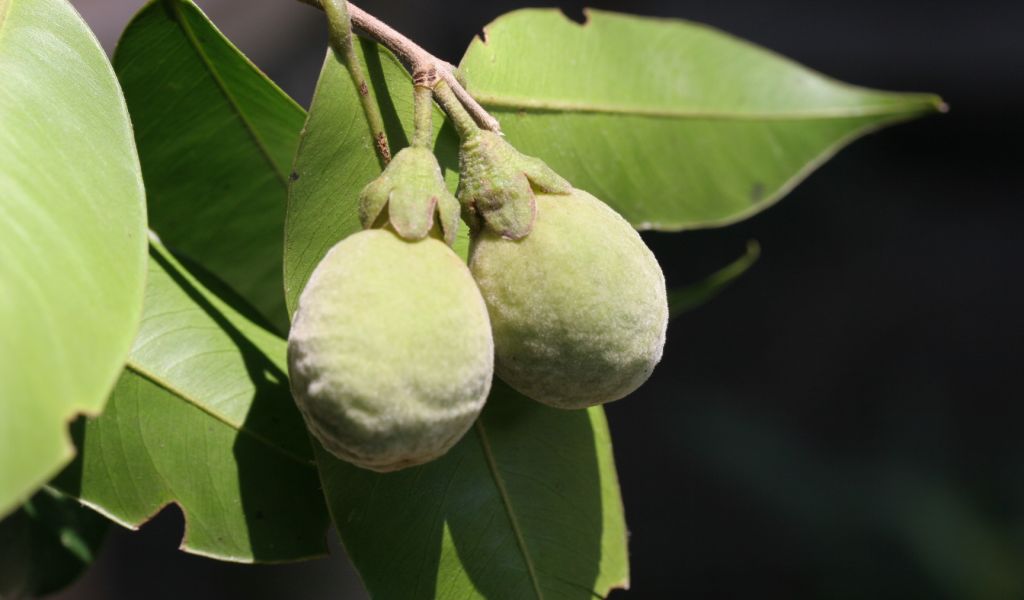ເກດສະໜາ / Agarwood
APA 6th ed. ເກດສະໜາ / Agarwood. (2021, December 16). Retrieved from https://www.phakhaolao.la/kb/0000021
MLA 8th ed. ເກດສະໜາ / Agarwood. Pha Khao Lao, 16 December 2021, https://www.phakhaolao.la/kb/0000021.
Chicago 17th ed. Pha Khao Lao. 2021. "ເກດສະໜາ / Agarwood." Published December 16, 2021. https://www.phakhaolao.la/kb/0000021.

Thai: kritsana, mai hom
Vietnamese: tram huong, ra huong, ky nam, gio bau
Cambodian: san krasna, klampeok, kresna
Chinese: chen xiang
English: agarwood, aloeswood, aguila wood, eaglewood, oudh
Khedsana is an evergreen tree up to 40 m in height and often over 100 cm in DBH. It has a small crown and a straight bole but is often multi-stemmed. The wood is whitish, but when infected it becomes dark-brown agarwood with a rich sweet fragrance. Twigs are hairy. Leaves are simple, alternate, and elliptic, of a bright whitish green colour and hairy on the underside. They are 7-9 cm long, 2-4 cm wide, and have a leaf stalk of 0.3-0.5 cm. Its axillary (or terminal) inflorescence cluster is umbellate. Flowers are white to yellow and fragrant. The fruit is egg-shaped and sized 2.5-3 x 1.5-2 cm when dry. It opens to reveal one to four black seeds. Mai Khedsana yields agarwood, produced by diseased tissues. This highly valued, resinous and fragrant deposit forms mostly in brown and black colours, and in many shapes. Deposits with three or four different commercial qualities are often found in one tree. Agarwood is potentially formed in all parts of the tree, seemingly as a response to wounding, and acts as a chemical barrier to harmful attacks by fungi and insects.
Agarwood is an umbrella-term for a wide range of graded products traded on national and international markets. This valuable commodity is found in Khedsana trees that have become ‘infected’ through disease and insect attack and have produced the agarwood as part of the healing process. Agarwood is used as a medicine, or as incense burnt on small pieces of charcoal. In the Middle East it is burnt during religious ceremonies and in the homes of wealthy families, as a status symbol of prosperity and to bring good luck. Incense sticks are produced from residues of distillation and sometimes from Mai Dii. Many fake products are found. Local use in Laos is very limited. Other products from the tree are a bitter green tea made from its young leaves, and rope or paper from the bark. Seeds and wild lings are collected to produce seedlings in nurseries.
